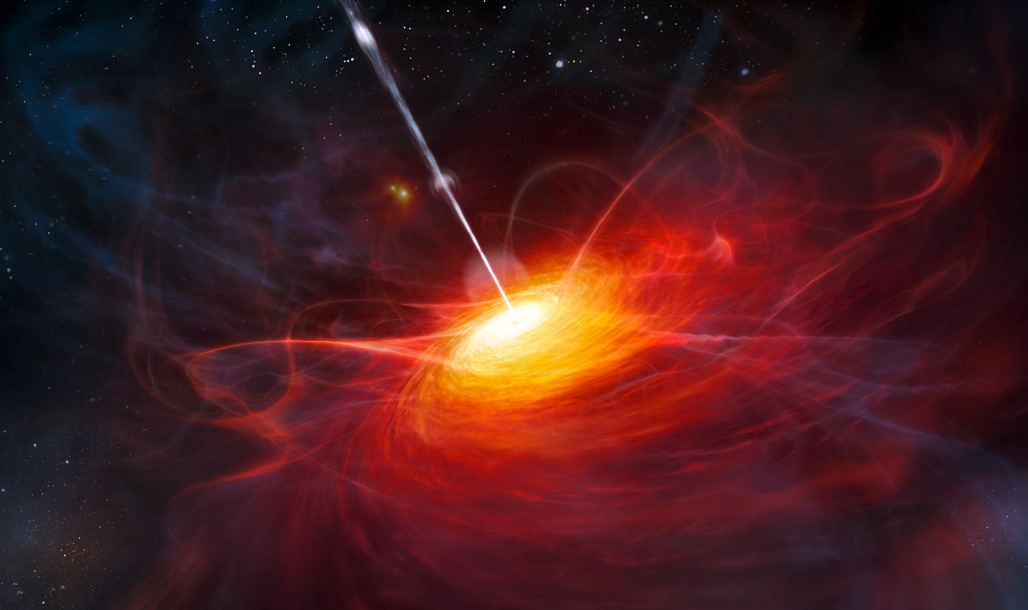
The energy output of an AGN (quasars being the most energetic and distant forms of active galactic nuclei) is often equivalent to that of a whole galaxy of stars. This is an output so intense that most astronomers believe only gas falling in towards a supermassive black hole — an object with many millions of times the mass of the Sun — can generate it. As the gas spirals towards the black hole it speeds up and forms a disc, which heats up and releases energy before the gas meets its demise.
Scientists are particularly interested in seeing what happens to the gas as it approaches the black hole. But studying such small objects at such large distances is tricky, as they simply look like points of light in even the best telescopes. Observations with spectroscopy (where light from an object is dispersed into its component colours) show that fast moving clouds of emitting material surround the disc but the true size of the disc and exact location of the clouds are very difficult to pin down.
Bruce will describe how astronomers can make use of cosmic coincidences, and benefit from a phenomenon described by Einstein’s general theory of relativity more than a century ago. In his seminal theory, Einstein described how light travels in curved paths under the influence of a gravitational field. So massive objects like black holes, but also planets and stars, can act to bend light from a more distant object, effectively becoming a lens.
Bruce and his team believe they have already seen evidence for two microlensing events associated with AGN. These are well described by a simple model, displaying a single peak and a tenfold increase in brightness over several years. Microlensing in AGNs has been seen before, but only where the presence of the galaxy was already known. Now Bruce and his team are seeing the extreme changes in brightness that signifies the discovery of both previously unknown microlenses and AGNs.
Bruce says: “Every so often, nature lends astronomers a helping hand and we see a very rare event. It’s remarkable that an unpredictable alignment of objects billions of light-years away could help us probe the surroundings of black holes. In theory, microlensing could even let us see detail in accretion discs and the clouds in their vicinity. We really need to take advantage of these opportunities whenever they arise.”
There are expected to be fewer than 100 active AGN microlensing events on the sky at any one time, but only some will be at or near their peak brightness. The big hope for the future is the Large Synoptic Survey Telescope (LSST), a project the UK recently joined. From 2019 on, it will survey half the sky every few days, so has the potential to watch the characteristic changes in the appearance of the AGNs as the lensing events take place.



